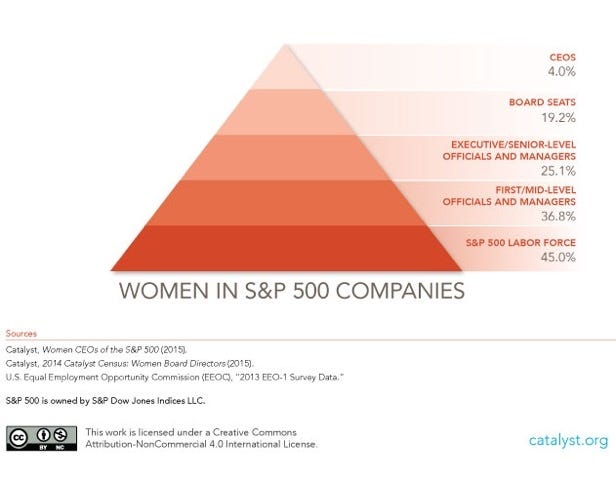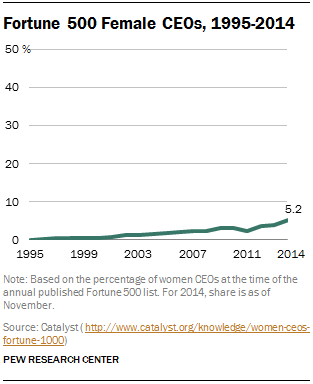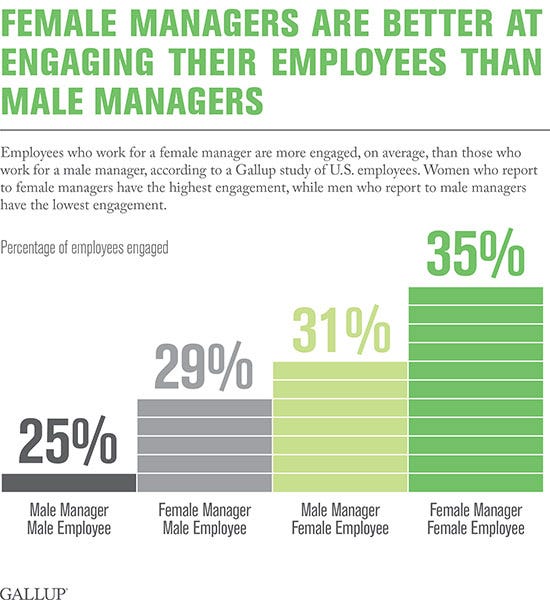
Since 1995, women in big decision roles in large companies have netted minimal gains in closing the gender gap. As of June 2015, only five percent of Fortune 500 companies were led by women, which in hard numbers is a whopping 24 female CEOs — the number has since dropped to 22. Not to mention women still make 78 percent less than men.

When I wonder what the world of business and philanthropy would look like if even 50 percent of big companies had female leadership, it’s the subtle differences that are most striking. In order to talk about gender discrepancy, it’s hard to discount innate gender distinctions. What would women bring to the table if they were 95 instead of five percent of the Fortune 500 landscape? A lot.
For one, United States non-profit Catalyst.org found that women make better entrepreneurs. Their 2011 report saw a 26 percent high return on invested capital (ROIC) in top companies with 19–44 percent women leaders and no women directors in the bottom. What that means is that companies with female entrepreneurs performed extremely well in generating revenue. This figure is even more impressive with women in the tech space who founded their own startups. Data from First Round Capital reported that “[…] startup teams with at least one female founder performed 63 percent better than all male teams. The data also showed that women are present in the top ranks of their ten most valuable companies.”
Not only do female entrepreneurs prove savvy at raising ROIC, women are doing it at ages over and under 50 Another win for women? A Gallup reportreveals that women are better at communicating and fostering loyalty in their employees.
“This [report] suggests that female managers likely surpass their male counterparts in cultivating potential in others and helping to define a bright future for their employees.”

But what should make female leaders higher in demand is their ability to meet the challenges inside and outside the boardroom. They stay mindful of societal challenges.
According to a Forbes article by Geri Stengel, women entrepreneurs are more socially responsible than their male counterparts. Says Stengel, “Successful women are more likely than successful men to own a business so they can pursue a personal passion and to make a positive impact on the world.” And the ability to see the need for charity and philanthropic may be gender specific.
Research by WPI’s 2010 Women Give study shows households with single females gave 57 percent more than households with single males, and when women donated, they tended to donate more than men. I think it’s safe to say that women are more philanthropic than men. It’s a sentiment that would most likely carry over to more conscientious business practices.
I admit, I am an idealist, but I am also a pragmatist. It will take a lot of pushing on our parts to take — not wait to be offered — our places in positions of power. Truth is, women don’t ask for promotions or negotiate for higher salaries, which is not surprising as women are more likely to come down with Impostor Syndrome. According to a recent Telegraph article, even women who are already at the top of their fields think they’re frauds:
It doesn’t matter who you are, imposter syndrome can strike at any time — and, paradoxically, it affects some of the world’s most celebrated women. Facebook’s chief operating officer Sheryl Sandberg has said: ‘‘There are still days when I wake up feeling like a fraud, not sure I should be where I am.’’
The actress and UN ambassador Emma Watson has repeatedly admitted she feels like an imposter, as have Kate Winslet, Renée Zellweger and Maya Angelou.
I’d love to see women at the helm of most projects. I think we have even more to offer than these statistics reveal. We are worth more than we give ourselves credit for.
With only five percent of women in top positions, we have a long way to go to even get to fifty percent. But in a world where there would be better entrepreneurs, better managers, better philanthropists and a highly adept group of people generating revenue back into Fortune 500 companies — a world of female CEOs looks pretty perfect.
This post was originally published on Entrepreneur.com







